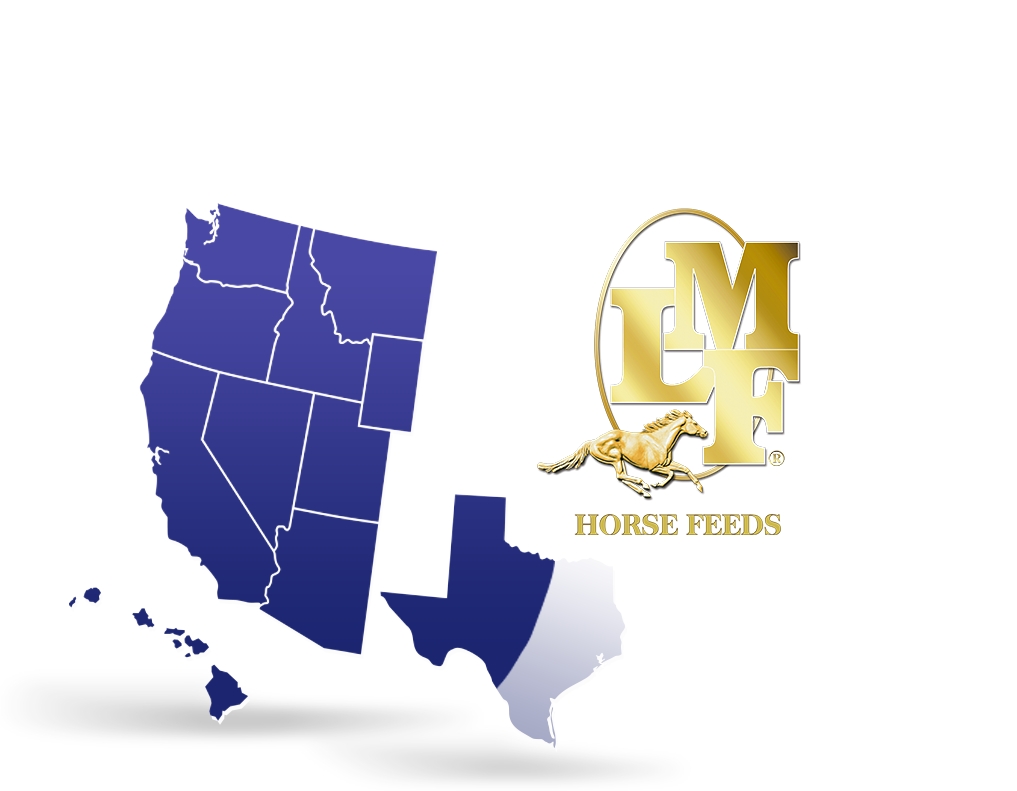Nutrition and Hoof Health
The influence of modern confinement systems and demand for maximum production have been shown to negatively impact hoof horn quality in cattle and swine. In these animals, hoof quality has been reported to deteriorate to the point that animals become lame and production ultimately suffers.
Horses also experience hoof difficulties. Common problems reported include cracking or crumbling hooves, inability of the horse to “hold” shoes and, ultimately, lameness which decreases performance and hampers production. The serious economic impact of hoof problems in horses is summarized in the old adage “no hoof, no horse.”
Just like skin, the appearance and integrity of the hoof is a mirror of the health, environment and nutritional state of the horse. It is not difficult to visualize how a horse in poor health could suffer from hoof problems. Likewise, animals which are confined to a small area, such as a stall, can develop low quality hooves which may be a result of poor environmental conditions. Manure and moisture can act together to break down the intracellular cementing substances which ultimately hold the hoof together.
Essential Nutrients for Hoof Growth: The importance of a balanced diet for sound hoof growth has only recently been recognized. Several nutrients are essential for proper keratinization, the process that builds hoof horn.
To date, the nutrients which are known to be essential for hoof growth include amino acids (especially sulfur-containing amino acids such as methionine), fatty acids, macrominerals including calcium, microminerals like zinc and iodine, and vitamins, most notably biotin.
Amino Acids: Amino acids are the building blocks of protein, including keratin, the primary protein associated with the equine hoof. Keratin is unique in that it contains an abundance of sulfur. Sulfur to sulfur (disulfide) bonds are responsible for the cross-linking of keratin protein s within the hoof. These bonds afford the hoof much of its strength. If sulfur-containing amino acids are limited in the diet, in complete cross-linking can occur, reducing the strength of the hoof.
Fatty Acids: Fatty acids are components of complex lipids which form the intercellular cement that binds the individual cells of the hoof.
In addition, lipid material is responsible for forming the extracellular permeability barrier. This permeability barrier controls the hydration state of the hoof and, ultimately, its hardness.
Minerals: Calcium is required for normal hoof growth. It is involved with a number of calcium-dependent transglutaminase enzymes. These enzymes are necessary to cross-link proteins which form the protective layer of the hoof.
A significant portion of the body’s zinc is found in the epidermal tissues including skin, hair, and hoof. Zinc deficiency in farm animals has long been associated with parakeratosis. This disease is characterized by a dermatitis resulting in a rough, dry hair coat. Zinc is involved in a number of enzymatic reactions controlling protein metabolism. All animals require iodine in their diets. Iodine functions within the body in the synthesis of thyroid hormones, which in turn control growth and development of all tissues.
Biotin: The best-known function of biotin is as a prosthetic group in enzymes con trolling gluconeogenesis and lipogenesis. Biotin has also been proposed to act as a hormone in the activation of protein (keratin) synthesis.
Equine Research: Several studies have been conducted to determine the value of supplementing equine diets with specific nutrients in the hope of positively impacting hoof soundness. One such study, conducted by Linden and co-workers, supplemented biotin in a study to 42 Lipizzaner stallions. In this study, 26 stallions were fed 20 mg of biotin per horse per day for 2.5 years. A control group of 16 stallions were fed a placebo. After 14 months of supplementation, hoof condition was determined to be 30% better in the biotin-supplemented horses compared with the horses receiving the placebo.
Research has also been conducted with the organic (chelated) form of zinc. It was reported that hoof growth was greater in yearlings fed an organic form of zinc compared with those fed inorganic zinc. Further, research found weak hoof horn contained less zinc than strong, healthy horn.

Available Across the West.
Distributed throughout the Northwest, Southwest, Hawaii and Texas.
Find a Dealer Near You
